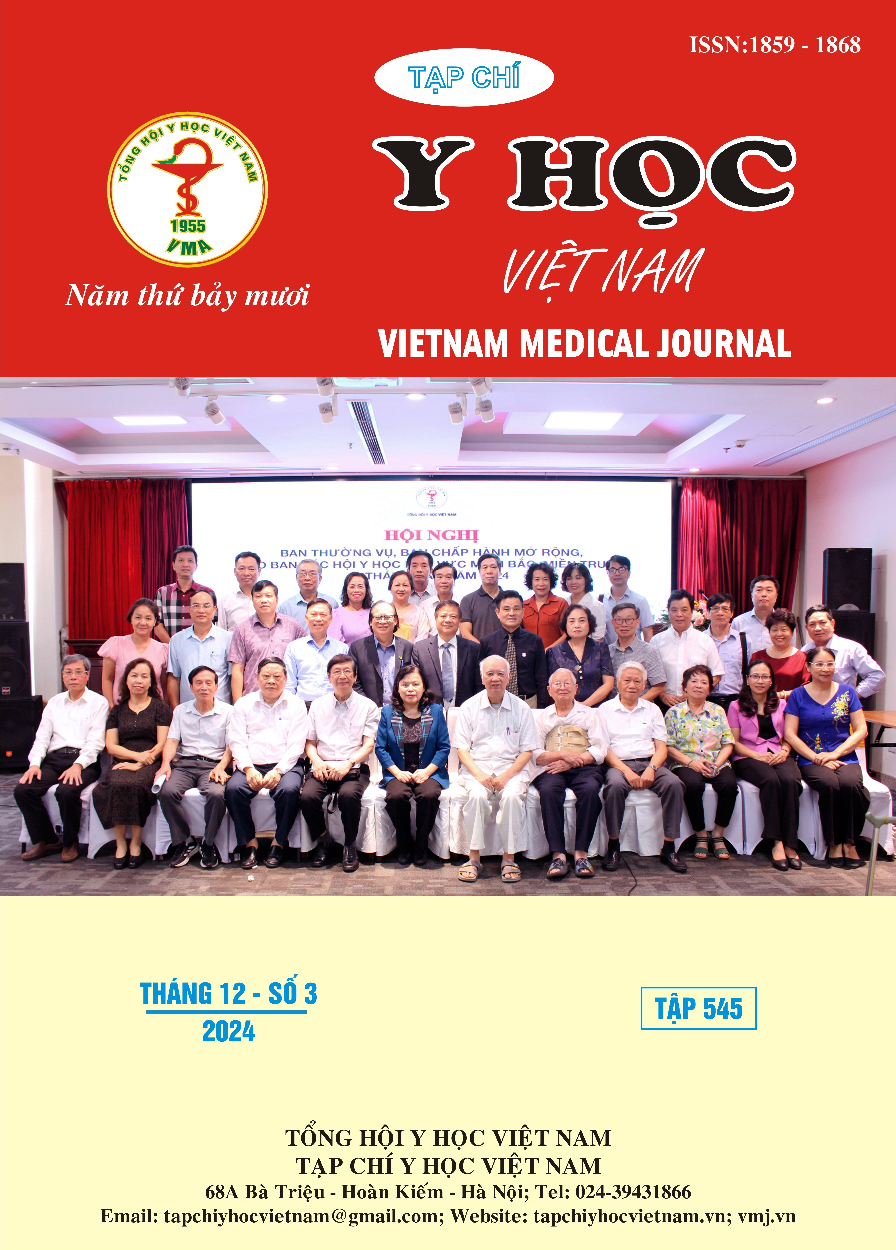FEATURES OF RETINOPATHY OF PREMATURITY IN NEONATES HOSPITALISED AT CHILDREN'S HOSPITAL 1
Main Article Content
Abstract
Background: Retinopathy of prematurity (ROP) is a disorder of retinal development in preterm neonates due to incomplete development of the retina originating from the optic nerve during pregnancy and the retinal immaturity. Current ROP treatment in Vietnam can catch up with modern methods globally. Knowing the characteristics of ROP should be helpful in clinical practice. Objectives: Description of clinical features of ROP at Children's Hospital 1. Methods: Case series from November 2023 to May 2024 at Children's Hospital 1. Results: This study enrolled 176 children diagnosed and treated at Children's Hospital 1. The disease is usually diagnosed at 44 days old (34.0-64.5) with a male/female ratio of approximately 1/1. The smallest gestational age of the study samples was 24 weeks, the largest was 34 weeks with a median of 29 weeks (27-30). The smallest birth weight in the study was 600 grams, the largest was 2300 grams with a median of 1100 grams (950-1375). Children had conditions such as respiratory failure (100%), surfactant use (90.9%), FiO2 ≥40% (89.8%), blood product transfusion (76.1%), pneumonia (88.6%), jaundice (69.3%), sepsis (60.8%), anemia (63.1%), and congenital heart disease (51.7%), in addition to some conditions such as a history of enteritis (23.9%), chronic lung disease (11.4%), and meningitis (1.7%). With a high pre-treatment rate of severe ROP, AP-ROP (19.9%) and plus disease (65.3%). The main treatment method was intravitreal injection of anti-VEGF (96.6%) with a high treatment response rate (98.3%) and few complications (4.0%). Conclusion: Retinopathy is the leading cause of blindness in children, often occurring in premature infants and those with low birth weight. The most popular treatment method today is Intravitreal injection of anti-vascular endothelial growth factor (VEGF) agents, which has a high treatment response rate and fewer complications than previous laser photocoagulation method.
Article Details
Keywords
: retinopathy of prematurity, preterm neonates
References
2. Hương Tô Vũ Thiên, Thu Trần Thị Hoài, Mậu Nguyễn Kiến, Tâm Phạm Thị Thanh. Tỷ lệ mắc bệnh lý võng mạc ở trẻ sinh non nhập viện vào khu chuyên sâu Sơ sinh Bệnh viện Nhi Đồng 1,Tạp chí Y Học TP. Hồ Chí Minh,2016. (2),43 - 47.
3. Toàn Phan Đình. Đặc điểm lâm sàng bệnh võng mạc trẻ đẻ non hình thái nặng và kết quả ban đầu điều trị bằng tiêm Avastin nội nhãn, Luận văn thạc sĩ y học. ĐH Y Hà Nội. 2012.
4. Lad E. M., Nguyen T. C., Morton J. M. Moshfeghi D. M. Retinopathy of prematurity in the United States,Br J Ophthalmol,2008. 92 (3),320-5.
5. Mintz-Hittner H. A., Kennedy K. A. Chuang A. Z. Efficacy of intravitreal bevacizumab for stage 3+ retinopathy of prematurity,N Engl J Med,2011. 364(7),603-15.


